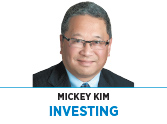Subscriber Benefit
As a subscriber you can listen to articles at work, in the car, or while you work out. Subscribe Now In my last column, I wrote how lack of savings is a financial crisis in our society and argued the recent government shutdown was a wake-up call shouting the need for each of us to establish an “emergency” or “uncertainty” fund.
In my last column, I wrote how lack of savings is a financial crisis in our society and argued the recent government shutdown was a wake-up call shouting the need for each of us to establish an “emergency” or “uncertainty” fund.
Further back, I told of how I always advise people not to invest any funds in stocks likely to be needed in the next three to five years. As we witnessed last December, stocks are extremely volatile by nature and can rapidly drop 10 percent to 20 percent for any or no reason.
You simply can’t risk having the funds you have earmarked for a specific purpose, like covering emergency expenses/income interruption or buying a house, get whacked just before you need them.
Thus, the only risk-less option giving you immediate access to your funds is a traditional bank savings account earning essentially 0 percent interest. Or is it?
During the global financial crisis, the Federal Reserve reduced its target for the Federal Funds rate (i.e. the interest rate at which banks lend excess reserves to other banks overnight) to “near-zero,” where it remained until December 2015. Following nine increases of 0.25 percent (most recently last December), the Fed’s target currently stands at 2.25 percent to 2.50 percent.
Low-cost checking and savings deposits are the lifeblood of banks, which make their dough on the net interest margin, which measures the difference between the interest collected on loans versus the interest paid on deposits. In short, banks make money by converting short-term liabilities like checking/savings deposits into long-term assets like mortgage or commercial loans and living off the spread.
To no surprise, as interest rates rose when the crisis faded, banks have been much quicker to raise rates for borrowers than for depositors. Indeed, according to The Wall Street Journal, the average yield on savings accounts (where nearly $8 trillion resides) has been stuck at a paltry 0.09 percent since January 2018. Further, another $1 trillion of customer cash at brokerage firms earns less than 0.3 percent, which goes a long way toward explaining how Schwab and Fidelity can afford to offer passive index funds with fees next to nothing.
Until the last year or so, it really didn’t matter much what you did with your cash—all rates rounded to 0 percent. That’s no longer the case. In fact, you can earn a significantly higher return without taking on additional risk, a true unicorn in the realm of investments.
Go to Bankrate.com to quickly compare rates offered by a plethora of online banking options (which have lower cost structures than traditional brick-and-mortar banks). Wall Street titan Goldman Sachs Group launched its online bank Marcus to service Main Street customers. Marcus currently offers a savings account earning 2.25 percent with no minimum deposit and no transaction fees.
That might not seem like a lot, but you can drive a proverbial truck between 2.25 percent and the current traditional bank savings account average of 0.09 percent.
The WSJ highlighted an online service that isn’t a bank but automates the process of maximizing your earnings on cash. MaxMyInterest.com routes your cash among the banks in its network offering the highest deposit rates while keeping you under the $250,000-per-account FDIC insurance limit. You simply set a minimum amount of cash you want to keep in your checking account and MaxMyInterest will automatically sweep cash into/out of that account.
MaxMyInterest currently offers a top savings account rate of 2.46 percent and charges a nominal fee for its service.
Big banks in particular have spent billions developing mobile applications and other technology to make transacting quick and easy and deposits “sticky” (i.e. less likely to leave in search of higher rates). Inertia is one of the most powerful behavioral forces in the investment world. There’s “free money” on the table, but you’re going to have to pick it up.•
__________
Kim is chief operating officer and chief compliance officer for Kirr Marbach & Co. He can be reached at 812-376-9444 or [email protected].
Please enable JavaScript to view this content.
